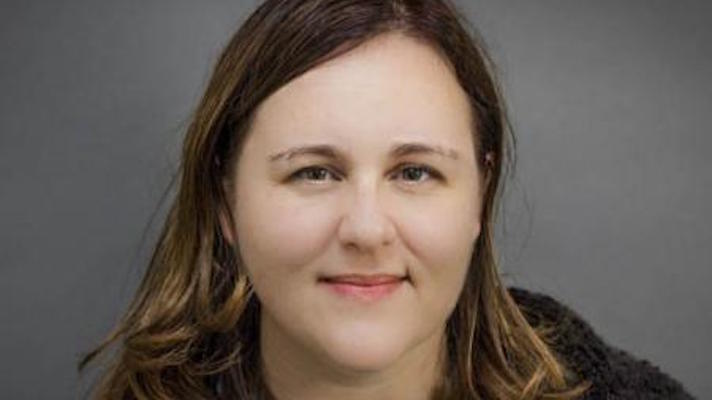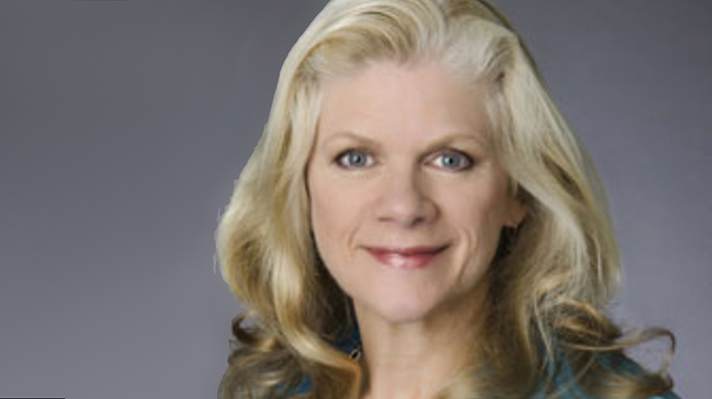Women In Health IT
It’s generally thought that healthy people are more health-engaged than people diagnosed with medical issues. But that’s old health school thinking: most health consumers managing chronic conditions say they’ve become more engaged with healthcare over the past two years, according to CDW’s 2017 Patient Engagement Perspectives Study.
It is the beginning of National Women’s History Month. It has been celebrated since 1987 but has its roots in International Women’s Day (March 8th) which started in 1911. The National Women’s History Month was first declared by President Jimmy Carter in 1980.
This year’s theme is “Honoring Trailblazing Women in Labor and Business”. Last year’s theme was “Working to Form a More Perfect Union: Honoring Women in Public Service and Government”.
I doubt there are any greeting cards at the store to celebrate this month. But who needs a corny card? Women just want to be paid equally, afforded the same opportunities as men and recognized for their contributions in all aspects of life.
With the 2017 theme focused on business, you can learn more about the women being recognized this year at the National Women’s History Project.
They include:
Barbara Hackman Franklin, former Secretary of Commerce under President George H.W. Bush who served five presidents in various roles and led efforts to increase the number of women in government.
Alexis Herman, first African American to serve as Secretary of Labor and who led the effort to institute a global child labor standard. She also launched an aggressive initiative to help unemployed youth.
Lilly Ledbetter, equal pay activist whose long fight is reflected in the Lilly Ledbetter Fair Pay Act signed by President Obama in 2009.
Barbara “Dusty” Roads, flight attendants’ union leader who fought against the airline industry’s sexist working conditions and regulations in the 1950s and 1960s.
Norma Yaeger, first woman stockbroker to be permitted on the floor of the New York Stock Exchange (NYSE) in the 1960s.
With my career focus on technology within healthcare, I want to highlight some women in technology and science I’ve learned about recently.
If you haven’t yet seen the Oscar nominated movie, “Hidden Figures”, put it on the “must see” list. You probably know the story by now – it’s about the NASA women behind the first manned space trip. Three real life heroes come to life in this movie, women many of us had never heard of before. They worked in engineering and computing in the early 1960’s in support of the space program against incredible discrimination as African American women.
Mary Jackson – first female engineer in NASA
Dorothy Vaughan – first black supervisor at NASA
Katherine G. Johnson – NASA mathematician instrumental in Astronaut John Glenn’s space flight and many more
Click on the links above to read their personal and true stories. And your kids will soon be able to play with a Katherine Johnson Lego figure as part of a recently announced Lego set honoring women at NASA.
Mildred Dresselhaus is another female trailblazer in the world of science I’ve recently learned about through a GE TV commercial campaign. Now 86 years old, Professor Dresselhaus has received numerous awards over her career including the US National Medal of Science in 1990 in recognition of her work on electronic properties of materials as well as expanding the opportunities of women in science and engineering. The commercial’s title is “What If Scientists Were Celebrities?” It is a charming 60 second spot that reminds us how much attention some celebrities get despite having accomplished very little.
The GE campaign is part of the company’s initiative to hire 5,000 women in STEM positions on the way to meeting a goal of employing 20,000 by 2020. In addition, GE is aiming to achieve gender parity in its entry level training program and to hold managers accountable for fostering a more inclusive environment. This is exactly the kind of corporate leadership we need to see!
According to a recent article in HealthcareITNews, GE outlined the talent crisis for women in STEM roles with a number of key statistics:
In the U.S. today, only 14 percent of all engineers and 25 percent of all IT professionals are women.
Though women make up 55 percent of all college and graduate students overall, only 18 percent of computer science graduates are female, according to the US Bureau of Statistics.
Other notable stats include:
Among the major tech giants, women are still under-represented, making up 13-24 percent of the tech-related jobs, and 17-30 percent ascending to leadership positions.
While women tend to outnumber men overall in higher education (55 percent to 45 percent), the share is much smaller for STEM education.
Nearly 40 percent of women with engineering degrees either leave the profession or never enter the field, according to one study.
When we encourage and develop women, we help everyone. I hope you will find ways to celebrate women’s history month in the coming weeks with your work teams and the young girls in your life – let them know that many before them have been trailblazers and encourage them to reach for their own lofty goals whatever they may be.
Related resources:
National Center for Women and Information Technology
Women in Science: 50 Fearless Pioneers Who Changed the World by Rachel Ignotofsky – Book for teens and young adults
A Mighty Girl – collection of books, toys, and movies for smart, confident, and courageous girls
This post was first published on Sue Schade's Health IT Connect blog.
Lygeia Ricciardi's advice for leadership, and social media, in a time of political uncertainty around the Affordable Care Act and the fate of health reform in America.
Committee volunteers play critical roles in leading and executing the strategic initiatives of HIMSS, while finding value in service, networking and enhanced professional development opportunities. Applications due March 13.
Results of two polls published in the past week, from the Kaiser Family Foundation and Pew Research Center, demonstrate growing support for the Affordable Care Act, aka Obamacare.
The Kaiser Health Tracking Poll: Future Directions for the ACA and Medicaid was published February 23, 2017. The margins in February 2017 were 48 percent favorable, 42 percent unfavorable.
While the majority of Republicans continue to be solidly against the ACA, a larger share of voters who identify as Independent have shifted to a favorable position on Obamacare.
Furthermore, the KFF survey found that more than one-half of Americans overall say Medicaid is important for their families, with fewer Republicans saying so. Fifty-six percent of Americans said they had some connection to Medicaid, either currently or in the past.
The KFF survey was conducted February 13-19, 2017 by telephone among 1,160 U.S. adults ages 18 and older.
The Pew poll asked people if they approved or disapproved of the healthcare law passed by Barack Obama and Congress in 2010. The difference between pro- and con- in the Pew poll was wider than in the KFF survey, with 54 percent approving and 43 percent disapproving.
Among people who disapprove of the law, more want to see Republican Congressional leaders modify the law versus repealing it, now with 44 percent of Republicans seeking repeal and 42 percent looking for a “repair.”
There’s also a big difference in how younger Americans view the ACA compared with older people by a 2:1 ratio: 65 percent of younger adults approve of the law vs. 31 percent who disapprove. Support for Obamacare has also grown among Americans between 50 and 64 years of age.
Note that the divergence in positive/negative responses in both polls reversed in 2017, lines crossing in the opposite directions as the 2017 new year set in with the eventual confirmation of Secretary Tom Price to lead the Department of Health and Human Services, and the reality of prospects for an ACA repeal.
Finally, college graduates are more likely to support the Affordable Care Act than people with no college.
The Pew poll was conducted among 1,503 U.S. adults the week before the KFF study, February 7-12, 2017.
Health Populi’s Hot Points: Media outlets repeated the Democratic Party leadership’s mantra that “Republicans could make America sick again.” The UK’s Financial Times reported that, “Trump warns party on speed of health reform as lawmakers push alternative visions.” The column pointed out: “The day after Republicans took a first step towards repealing the Obama reforms, the president and Mr. Pence separately met lawmakers who are pushing alternative visions for improving healthcare while trying to insulate themselves from future public ire.”
The issue “spans household budgets, government spending and the profitability of the health industry,” the FT called out.
Indeed: the U.S. healthcare economy is $1 in $5 of the national economy: As such, the healthcare economy is the national economy.
At last week’s annual HIMSS conference, which attracted more than 40,000 healthcare information technology users and developers to Orlando, there was a growing number of vendors focused on patient payment systems – to deliver greater transparency, medical banking, and so-called “revenue cycle management.”
Healthcare providers, hospitals and physicians alike, are confronted by patients who are now payers: paying first-dollar coverage out-of-pocket whether in high deductible health plans, working through health savings accounts, or paying @retail without insurance or under-insured. These patients are Democrats, Independents, and Republicans alike, all seeing $1 in every $5 bill in their pocketbook going to healthcare costs.
Over one-half of respondents to the February 2017 KFF poll reported some connection Medicaid: a fact that Congress, President Trump, and Secretary Price should note.
I’ll put a real-life, fine point on this: I spent last Friday morning, February 24, with the Kansas Hospital Association brainstorming the growing role of patients as consumers in U.S. healthcare. Kansas Governor Brownback had not expanded Medicaid to-date, and neither had the State House been keen to do so. The night before my speech to the Association, the State House had voted in favor of expanding Medicaid. That issue will now be considered by the Kansas State Senate.
This is a state that has been very conservative about Medicaid expansion. Now, in February 2017, we see a sign that state representatives seek a change. Kansas could be a bellwether. Watch this space: “ad astra per aspera” means, “through hardship to the stars.” There are few greater hardships than a very sick person facing a choice between paying for healthcare services and life-saving drugs, and paying for food, shelter, and heat in the winter.
When I was a child we looked forward to our birthdays with joy and trepidation. Yes, we would get a few presents, a birthday cake and for a few very fortunate children there would be a birthday party to attend. But we would dread school on our birthdays.
Back then there were birthday spankings. Ah, the acute embarrassment of going to the front of the classroom and bending over a desk to receive a spanking for each year of our lives. These spanks weren’t too painful, but then there was the “one to grow on.” That final spank packed quite a wallop and many a child would return to their seats rubbing their behind.
When Alex Fair asked me to paint him a new jacket for him to wear in the Walking Gallery, I painted him with a birthday cake and candles. I named it "The candles that never go out." I painted his happy face in darkness lit by flames and wrote Medstartr Ventures upon that cake for his work to help raise funds to improve healthcare.
I have known Alex for almost seven years. I know he still fights to improve healthcare when so many have dropped away from our cause. I know he celebrates each year that his work struggles on as our changing economy and riotous political structure provides a type of encouragement that closely resembles that final birthday smack.
Alex’s first jacket is falling apart. He wore it often in the last six years. He joined in the beginning, when I did not know you should not paint on corduroy. I am glad he will wear this new one. As I said on twitter the other day, “An army of change needs uniforms.”
I want you to think about that.
Why do armies need uniforms? Most importantly it shows which side you on in wartime. Joining The Walking Gallery shows that you are very much on the side of patients and overall improvement within healthcare. Uniforms also make it really hard to set down your mantle of beliefs. When we publicly wear our stories upon our backs it can be as heavy as a rucksack, yet not as easily set aside.
This blog was first published on Regina Holliday's Medical Advocacy Blog.
There could be as many different wrap-ups on HIMSS17 as there were people there – over 42,000. No one sees the same vendor exhibits, hears the same presenters, or talks to the same people. There are conferences within conferences. So, here’s just one wrap-up – mine
The first speaker I heard did a great job of scaring all the CIO’s. Kevin Mitnick, the world’s most famous hacker and security consultant, and author of several books including his most recent one, The Art of Invisibility, was the opening keynote at the CIO Forum on Sunday. His talk, “The Art of Deception: How Hackers and Con Artists Manipulate You and What You Can Do About It.” included real-time demonstrations. He drove home the point about how vulnerable we are as individuals and organizations. I highly recommend checking out his website to learn more or get scared yourself.
Dr. B.J. Miller was the final speaker at the CIO forum. His talk, “What Really Matters at the End of Life”, was a very sobering view of palliative and hospice care yet strangely inspiring at the same time. As he said, “spending time thinking about your time on the planet while you have time is important – don’t wait.” I highly recommend listening to his Ted Talk with this same title.
I have been asked to serve on the CHIME Education Foundation Board again so Monday morning meant a board meeting. It’s gratifying to know that after serving as the initial chair of the foundation board 10 years ago, approximately $170,000 in scholarships is now being awarded annually. An important part of our collective commitment to developing the next generation of health IT leaders.
Another part of that commitment is reflected in CHIME’s new initiative focused on women’s leadership development. At an early Monday morning breakfast meeting, current CHIME board chair, Liz Johnson, shared the results of the CHIME women’s survey and the women in attendance discussed leadership development opportunities for the coming year.
The HIMSS conference opened Monday morning with a keynote from IBM CEO, Ginni Rometty. She challenged us all as she talked about IBM’s Watson, the new “moonshot” and her own personal journey as a technology leader. With an increased focus on women in technology and STEM, no question that she is an inspiring and strong role model for women.
Views from the Top sessions on population health and connected health rounded out the first two days for me on the education front. On Tuesday night I was honored to be part of a panel on value based care and population health at a private IBM dinner hosted by IBM Watson Health General Manager, Deborah DiSanzo. It was great to hear what Joe Kimura, MD, chief medical officer from Atrius Health, and Joe Reilly, CIO from Central New York Care Collaborative, are doing in this space and share my perspective.
With the help of social media I kept up on the hot topics – this year the AI sessions were overflowing and the tweets highlighting the blockchain forum on Wednesday gave me a good sense of its potential for healthcare. In just the first two days, there were 52,020 #HIMSS17 tweets. Check out the #HIMSS17 Influencers for the full conference here. There’s even a cool interactive visual map from MDigitalLife.com you can mouse over to see the interconnections between influencers here.
With my newly launched health IT advisory firm, StarBridge Advisors, it was a different kind of HIMSS for me. We talked with potential clients and had several meetings with other firms who we may partner with on engagements.
While I skipped the HIMSS awards gala, I was able to congratulate in person several of the award winners that I know well — Pam Arora (HIMSS/CHIME John E. Gall, Jr. CIO of the Year), Marion Ball (one of the Most Influential Women in Health IT Award recipients), and Dana Alexander (HIMSS-ANI Nursing Informatics Leadership Award). Kudos to these incredible women and all the 2017 award winners!
While HIMSS is tiring and our feet ache at the end of each day, we all head home with renewed energy and passion for what we do – advancing healthcare and making a positive difference through technology!
This post was first published on Sue Schade's Health IT Connect blog.
In this podcast episode, part three of this three-part series, we study the impact advocacy can have on the policy-making process with Leslie Bruce, Director, Healthcare Leadership and Community Outreach at UC San Diego Extension.
The countdown to HISS17 continues. As I wrote last week, the best way to think about it is in three ways – education, vendors, and networking. This post is the second in a three-part series – focusing on vendors.
If you already registered, you have been inundated with vendor emails and snail mail since then. The ginormous exhibit hall beckons when you get to Orlando. So how do you make the vendor aspect of HIMSS17 as productive as you can?
Here are some tips to consider based on many years of navigating the exhibit floor:
Meeting with your current vendors – I’ve talked with colleagues in the past who always start here. They schedule meetings in advance or stop by just to say hello at all their primary vendors’ booths. I never fully understood this. Maybe I was a CIO in an organization with mostly internally developed systems for too long. You can connect with your primary vendors throughout the year so do you really have to spend a lot of time with them at HIMSS? It’s up to you and your specific needs and issues. If you want to see the latest and greatest products available or coming in the next year OR you have some big issues to discuss with their executives, it makes sense.
Visiting vendors that you are evaluating – IT teams are in the planning phase for new systems all the time. If you are using HIMSS to check out the market in a focused product area, this is a great chance to get the lay of the land. Scheduling meetings and demos in advance makes sense.
Exploring new products – You might be curious as to what new start-ups and innovators are doing and have a list of small firms to check out. You’ll have to work to find them since the big, established vendors buy the best floor space. But do find them – they will most likely be swarming with booth staff ready to talk to you.
Special showcases – Be sure to check out the Interoperability Showcase to see what level of integration is possible these days. And look for the HX360 Innovation Zone where many new start-ups are demonstrating their products.
You control your time – Booth staff are there to get your attention and tell you all about their products and services. They will keep you if you’re willing to stay. But you control your time and your plan. If you just need a quick informational conversation, want to pick up some materials, and leave your contact info (or not), then do that. Be polite and respectful but move on when you are ready.
Being recognized – There are lots of ribbons that attendees can wear on their badges. The CIO ribbon is one that CIOs treat differently – some would never wear it because they think they’ll be aggressively approached by everyone on the floor selling something. I am of the mind that by wearing it, booth staff easily see you are a CIO and a decision maker and you might more easily get their attention when you visit them. Go back to my previous point – remember, you control your time and which vendors you talk to.
Divide and conquer – Like my advice on education last week, plan with your team if you are going to meet with certain vendors together or you are splitting them up to cover more ground.
Maps – You can download maps in advance from the conference site. This is especially helpful for planning your time in the exhibit hall. Make your list of vendors to see, mark up the map and break it down in sections for each day.
Social media ambassadors – They can help you prepare, keep up while there, and stay connected afterwards. Follow these influencers to get the most out of HIMSS17.
#HIMSS17 Hashtag Guide – HIMSS has provided a helpful guide that lists key hashtags. Before, during and after the conference these hashtags may be helpful as you focus on what you want to learn about and follow. On both Twitter and LinkedIn, you can find related posts using the hashtags.
And last, but not least, pack comfortable walking shoes – HIMSS conference veterans understand this. New attendees may not. You will easily walk several miles each day between education sessions and exhibits. Practicality not vanity is what attendees need to think about when packing shoes. Ladies, comfortable flats or low heels should rule!
This post was first published on Sue Schade's Health IT Connect blog.
The countdown to HIMSS17 is on. It’s less than three weeks and if you’re anything like me, you’ve not figured out your HIMSS schedule yet. You’re getting those emails from HIMSS and vendors about what to do, starting to see the “HIMSS preview” type articles in your favorite publications.
As the conference website says – 5 days | 300 sessions | 1,200 exhibitors | 45,000 colleagues. It’s as overwhelming as it sounds.
The best way to think about it is in three ways – education, vendors, and networking. This post is the first of a three-part series – focusing on education. After all, you’re paying a hefty registration fee and travel expenses so you should get some education time in, right? It’s not just about the massive exhibit hall and seeing all your friends in the industry!
Bottom line, you need a strategy and a focus. No more getting a big thick conference book to page through in advance – it’s all online for you to peruse and develop your plan. The conference website has education organized by topics, professional roles, specialty education, and types of session.
Here are some tips as you plan your education at HIMSS17:
Sunday pre-conference symposia – if you haven’t registered for one of these yet, consider doing so. They are an additional cost but an excellent full day focus with experts on topics such as cybersecurity, interoperability and health information exchange, nursing informatics, medical device security, and precision medicine.
Keynotes – you should certainly look at the program and decide which ones you’ll try to attend. Remember, the main room can be full with an overflow room. Don’t think you can walk in at the last minute and get a seat.
Session levels – look at the level of the sessions you want to attend — introductory, intermediate, or advanced. This is HIMSS way of helping you figure out if the content is at the right level for you. There is always a “Views From the Top” track which is aimed at senior IT leaders. Don’t be put off; anyone can certainly attend. I’ll be checking them out.
Key topics – Pick a couple focus areas you want to learn about and make sure you get to the best of those sessions. HIMSS helps by organizing sessions under broad topics such as:
clinical and business intelligence
connected health
consumer and patient engagement
health IT public policy
leadership, governance, strategic planning
privacy, security and cybersecurity
process improvement, workflow, change management
With all the changes in DC these days, I will be paying close attention to the public policy ones. And I’m going to see if there is anything in the connected health and consumer and patient engagement areas I want to attend.
Divide and conquer – If you are attending with work colleagues, don’t all go to the same sessions. Plan to go to different ones and share your notes. The most effective IT teams will be working together in the next two weeks to map out their game plan to get the most from their investment.
At this stage, these are the sessions I’m most interested in:
Integrating Technology into Medical Practice for Better Patient Care
The Best Exotic Marigold Hospital: Hilton digital experience
Using Data to Understand the Full Value of Patients
Improving Patient Outcomes and Health Economics through Connected Health Innovation
Welcome to the Age of the Patient: Transform Patient Relationships and Results with CRM
Nationwide Trusted Exchange: Are We There Yet?
This post was first published on Sue Schade's Health IT Connect blog.









